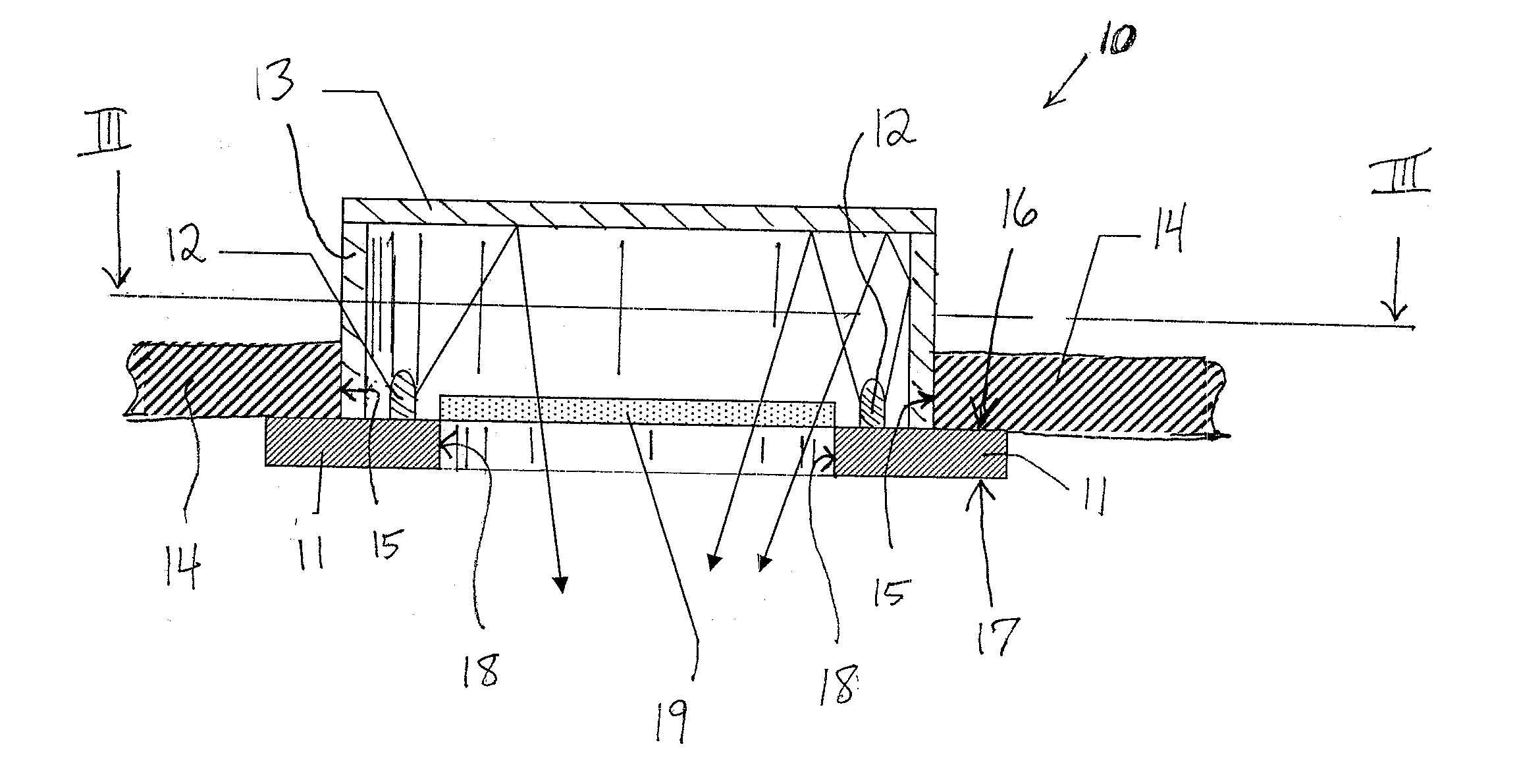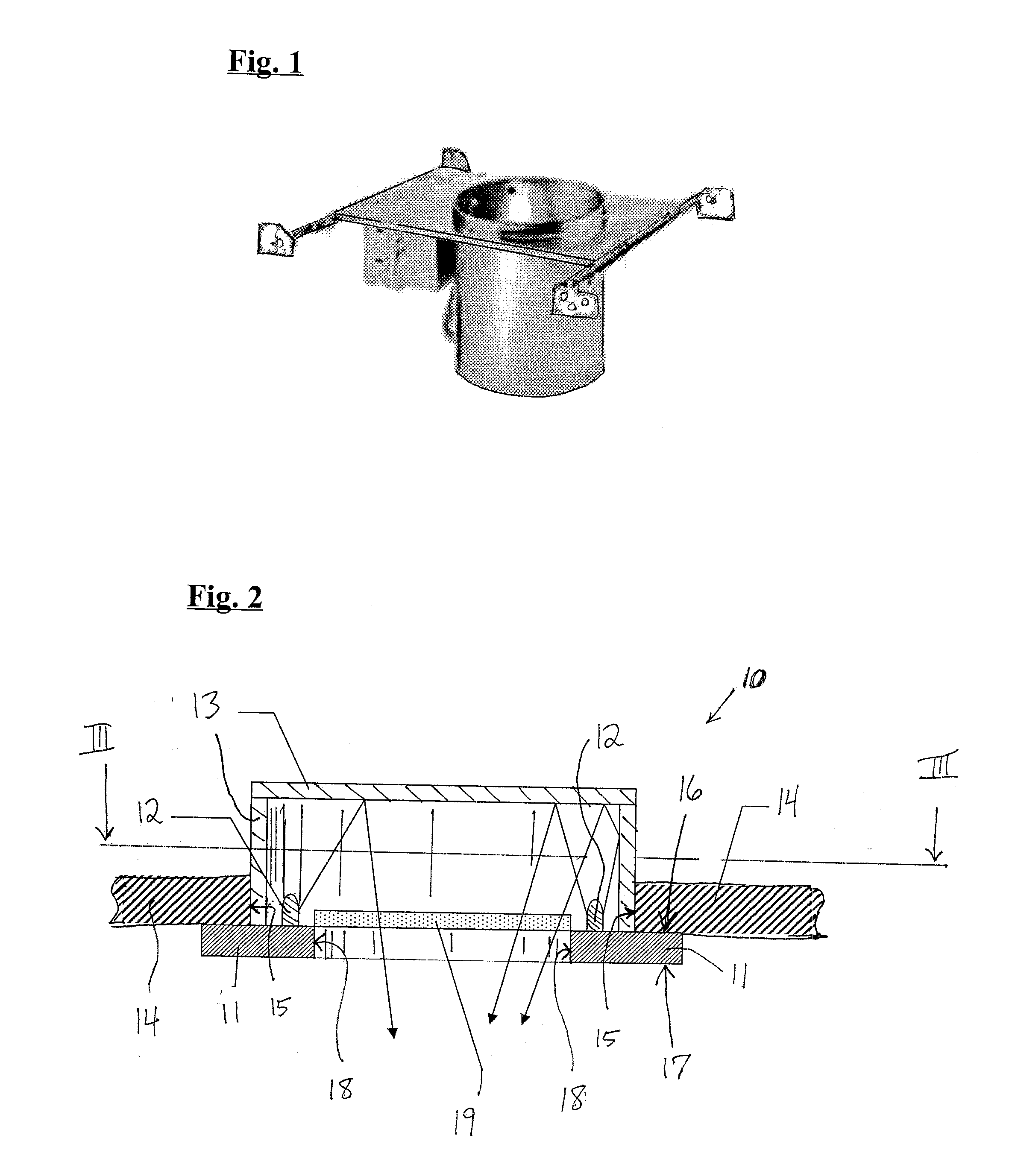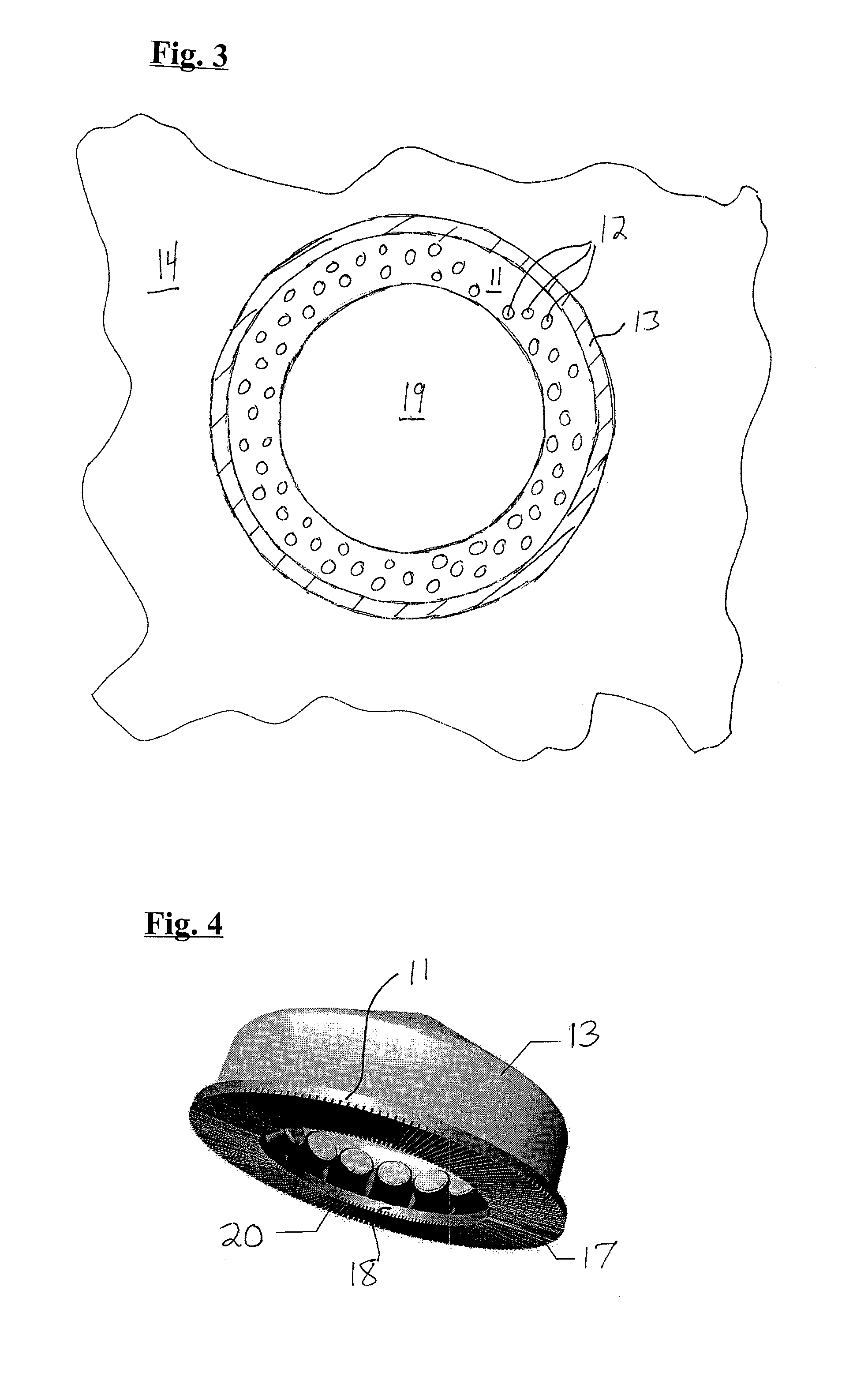Lighting device
a technology of light emitting diodes and light sources, which is applied in the field of light emitting devices, can solve the problems of incandescent light bulbs, low efficiency of solid-state light emitters, and incandescent light bulbs being very energy-inefficient light sources, so as to achieve favorable glare reduction, reduce glare, and high cri ra
- Summary
- Abstract
- Description
- Claims
- Application Information
AI Technical Summary
Benefits of technology
Problems solved by technology
Method used
Image
Examples
Embodiment Construction
[0050] As noted above, in first, second and third aspects of the present invention, there are provided lighting devices, each comprising at least one thermal conduction element, a plurality of solid state light emitters and at least one reflective element. In a fourth aspect of the present invention, there is provided a lighting device comprising at least one thermal conduction element and a plurality of solid state light emitters.
[0051] The at least one thermal conduction element can be made of any material which provides good heat conduction, as well as other properties needed to function properly in the environment in which it is deployed and in view of its design, e.g., structural rigidity, resistance to abrasion and corrosion, etc. A representative example of a suitable material out of which the thermal conduction element(s) can be constructed is aluminum.
[0052] In some embodiments according to the present invention, the thermal conduction element defines at least one conduct...
PUM
 Login to View More
Login to View More Abstract
Description
Claims
Application Information
 Login to View More
Login to View More - R&D
- Intellectual Property
- Life Sciences
- Materials
- Tech Scout
- Unparalleled Data Quality
- Higher Quality Content
- 60% Fewer Hallucinations
Browse by: Latest US Patents, China's latest patents, Technical Efficacy Thesaurus, Application Domain, Technology Topic, Popular Technical Reports.
© 2025 PatSnap. All rights reserved.Legal|Privacy policy|Modern Slavery Act Transparency Statement|Sitemap|About US| Contact US: help@patsnap.com



